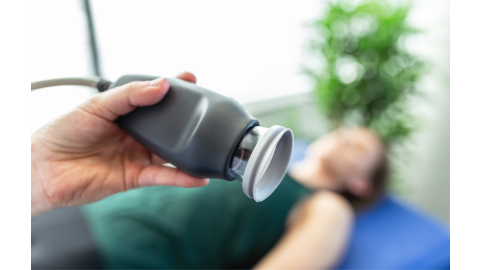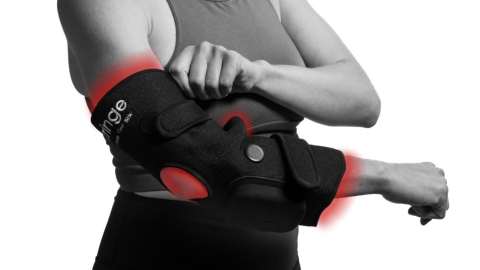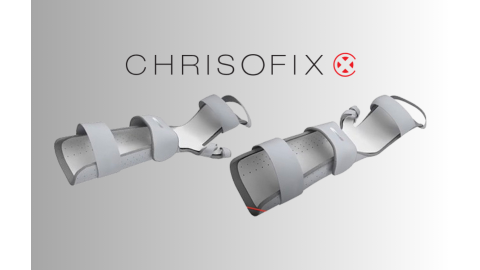Table of Contents
What is MS?
What are the Common Symptoms?
Who Gets It?
How Does It Progress?
Relapsing-remitting MS
Primary-progressive MS
Secondary-progressive MS
Progressive- relapsing MS
Treatment Options
Reducing Frequency and Severity
Symptom Control
Manage Your Symptoms
Staying Active
Low Impact Cardio
Strength Training
Stretching
Getting Your Rest
Stress Control
Getting Help
Find a Support System
Living Aids
Aids for Eating
Aids for Mobility
Aids for Self Care
What is MS (multiple sclerosis)?
MS is a degenerative autoimmune disease that attacks the tissues of the central nervous system. It destroys the fatty coating (myelin sheath) that protects the nerve fibers surrounding the brain and spinal cord. As a result, the deterioration causes problems with inner body communication and nerve control.
What are the common symptoms of MS?
MS can affect each person differently. The kind of symptoms and severity can vary based on the person and progression of the disease. Here are some of the most common symptoms:
- Weakness or numbness of the limbs
- Blurry or loss of vision
- Body tremors
- Fatigue
- Muscular and neurologic pain
- Dizziness
- Loss of mobility or coordination
- Muscle spasms
- Emotional changes and depression
Who is at risk of getting Multiple Sclerosis?
Unfortunately, the cause of MS is still unknown. However, scientists have discovered some common characteristics amongst people many people who have been diagnosed with the chronic disease.
- Age
- People can be diagnosed with MS between the ages of 15-60, but it is most typically found between the ages 20-40.
- Gender
- MS is found in both men and women, but, it is 2 times as likely to occur in women.
- Genetics
- People are at a higher risk if it runs in the family.
- Pre-existing disease
- It is more common in people with pre-existing diabetes or diseases of the thyroid and bowel.
- Descent
- It is most commonly found in people from northern European descent.
How Does MS Progress?
There are four types of MS, each varies in the severity and progression of symptoms.
Relapsing-remitting MS
This is the most common type of Multiple Sclerosis, and is often found in people who are diagnosed between ages 20-30. If you have Relapsing-remitting MS, your symptoms will flare up and cause a relapse, often referred to as an “attack”. Then over a period of weeks or months, symptoms may fully or partially subside; this is the period known as remission.
Primary-progressive MS
Primary-progressive MS is primarily diagnosed in people ages 40 and up. If you are diagnosed with primary-progressive MS, your symptoms will gradually get more severe, without periods of relapse and remission.
Secondary-progressive MS
Relapsing-remitting MS can often progresses into secondary-progressive. Periods of relapse and remission slowly stop, and your symptoms steadily become more severe.
Progressive-relapsing MS
This is the most uncommon form of multiple sclerosis. It may seem to start out as primary-progressive, but you can be later diagnosed as progressive-relapsing MS. It is categorized by a steady progression of symptoms, with occasional flare ups of new or more severe symptoms.
Treatment Options for MS
Currently, there is not a cure for multiple sclerosis. However, there are ways to control the symptoms of the progressive disease. There are treatments designed to reduce the frequency and severity of symptoms and to manage pain and fatigue.
Reducing Frequency and Severity of Symptoms
Doctors may prescribe you a first line of medication in the hopes of slowing down the progression of MS and even reducing the frequency of flare ups. The drugs act to modify the disease, so that the immune system doesn’t attack the protective myelin sheath around the central nervous system. The drugs may come in the form of muscle injections, daily pills, or infusions.
- Injections
- Beta interferons (most common) and Glatiramer
- Pills
- Teriflunomide, Fingolimod, and Dimethyl fumarate
- Infusions
- Natalizumab and ocrelizumab
- Plasma Exchange
Symptom Control
Alongside first line drugs, patients with multiple sclerosis will also need treatments to manage their symptoms to make daily life easier and more comfortable. This may include medication, lifestyle changes, and physical therapy. Doctors may prescribe you muscle relaxers for stiffness or spasms, antidepressants for depression, and other medications to reduce fatigue and improve bladder control.
Manage Your Multiple Sclerosis Symptoms
Looking for a way to manage your symptoms naturally? Lifestyle changes can make a huge difference. Prioritizing your overall health and developing healthy habits can change the way you feel, and may even slow down the progression of MS.
Staying Active
Exercise is a pivotal lifestyle change that can help manage your symptoms and improve your quality of life. For many years, doctors instructed patients with multiple sclerosis to avoid working out. However, recent studies show that exercise actually improves their muscle control, energy, mobility, mood, bladder control, and weight management. In addition to symptom reduction, exercise can also help prevent health complications down the road.
If you aren’t already active, or you find yourself easily fatigued, start slowly to build up your strength and endurance. If you don’t know where to start, consider a mix low impact cardio, strength, and stretching exercises. Experiment with different exercises to find what feels best for you.
Low Impact Cardio
Over 200 studies show that cardio has a positive impact on MS. The exercise can reduce fatigue and raise your heart rate, which in turn, can actually reduce brain atrophy and lesions. Find a form of cardio that you enjoy, and start improving your quality of life!
Walking
Walking is a great way to stay active because it is low impact and can be done without any equipment. Get some fresh air and start your day with a brisk walk! It is important that you have the proper support while walking, so you don’t hurt your feet or knees on the hard pavement or gravel. Consider getting some orthotic inserts for your gym shoes to absorb shock and provide extra comfort as you workout.
Do you want to keep things interesting? Try walking new routes or setting goals for yourself! You can keep track of you steps and mileage with a pedometer and strive for a longer time or distance each week.
Swimming
It can be easy to overheat when you have MS, but water helps regulate body temperature to keep you cool. So, jump in and start swimming! If you don’t have a pool, consider getting a monthly membership at the local gym. Swimming laps is a great, low impact way to get your heart pumping and your whole body moving.
If you get bored with laps and want to switch it up in the pool, try performing aerobic exercises with water weights. It combines cardio and strength training, so you can accomplish two things at once!
Biking
Another way to get your cardio done is with biking! It is easy on the body and you can easily adjust the gears and resistance to accommodate personal fitness levels. If you struggle with coordination and need additional support, you can use a stationary or recumbent bike to keep you stable.
Strength Training
If your MS progresses, daily activities can become more difficult. However, research shows that strength training can prolong or improve mobility. It can also increase your muscular endurance, so you can move and stand for longer periods of time. Start off slow, and increase your weight and reps as you get stronger.
Need ideas? Use your body weight for exercises like squats, lunges, leg lifts, and push ups. Or, get yourself some dumbbells to target muscle groups in your arms, legs, and back. If you don’t have a lot of storage for weights at home, consider working out with some resistance tubes! They are just as effective as free weight workouts, but take up much less space.
Stretching
Did you know that stretching can prevent your muscles from shrinking and may even reduce symptoms of spasticity? Stretching for just 15 minutes a day can have a prolonged impact on your mobility . Simply find a space, lay down a padded mat, and begin stretching your arms, legs, and back. Build up your flexibility and try to hold each stretch for 30 seconds. If you want to incorporate stretching into your workout, try some dynamic stretches as a warm up. Or, use a foam roller to stretch out the muscles during your cool down.
Getting Your Rest
Getting an adequate amount of sleep is essential if you are diagnosed with MS. Without proper rest, you can become more easily fatigued and may even experience changes in mood, balance, cognition, and muscle spasticity. However, it may not be so easy to get the sleep you need. Statistics show that people with multiple sclerosis are three times more likely to experience sleep disturbances, and two times more likely to experience a reduced quality of sleep.
So, what should you do if you are struggling to fall asleep, or stay asleep throughout the night?
- Reduce your caffeine intake, and try to limit it to morning consumption
- Exercise in the morning or early afternoon, allowing at least 4-6 hours between the end of a workout and your bedtime
- Get comfortable with a supportive pillow
- Keep a regular sleep schedule to maintain your circadian rhythm
Stress Control
Stress is an inevitable part of life, especially if you are diagnosed with a chronic disease such as MS. You may be presented with challenges as you experience changes in your health, and that can easily become overwhelming. Research shows that there can be an association between stress and flare ups. So, it’s important to recognize what triggers your stress and find ways to manage it.
Not everyone handles stress the same way. Try out different things and see what works for you! Here are some ideas if you are looking for a place to start:
- Yoga
- Make a mind-body connection and get your body moving with yoga. You can buy a mat to practice at home or go to a class for guidance.
- Essential Oils
- Diffuse a relaxing blend of essential oils for aromatic stress relief.
- Putty
- If you find yourself fidgeting, play with putty for a calming movement to help ease your mind.
- Exercise
- Your body will produce natural, stress-relieving endorphins.
- Meditation
- It can take some practice, but meditation is a great way to clear your headspace.
Getting Help with Multiple Sclerosis
Receiving a life changing diagnosis may leave you feeling overwhelmed. So, patients with MS are encouraged to seek out support. There are adjustments you can make to make things a little easier mentally and physically. It’s okay to seek out different kinds of support!
Find a Support System
There is no shame in feeling upset, stressed out, or confused after your diagnosis. MS not only changes your physical health, but it can affect your mental health too. It’s important to acknowledge your mental state and find a support system that can help you cope with your emotions.
Find a close friend or relative to talk to, or find a local MS support group. If you find yourself feeling depressed, speak to a doctor or therapist. Maintaining your psychological health is just as important as treating any physical symptoms that accompany MS.
Living Aids for MS
It can be frustrating to accomplish everyday tasks when you are struggling with flare ups or the progression of new symptoms. But, there are specially designed products that can make some of your daily tasks easier. Consider looking into some living aids if you need help in your home or while you’re traveling.
Aids for Eating
If the severity of your MS progresses, or you are facing a relapse, you may find it hard to eat on your own. Tremors are a very common symptom of MS that can make it hard to keep your hand steady. MS may also affect your range of motion which makes it more difficult to comfortably use utensils. Here are some ideas that could make mealtime less stressful.
- Weighted plates, cups, and silverware are a great option to steady your hand and reduce spills.
- High sided plates give you extra leverage to scoop up your food
- Bendable utensils use a pliable metal that can be turned to accommodate your current range of motion
If these aids sound like what you’re looking for, use a premade kit that includes all of the dining aids you might need during a flare up.
Aids for Mobility
If you find yourself easily fatigued or have a hard time walking on your own, it may be time to consider investing in some aids that will help you get around. The degree of MS and the amount of traveling you do may affect your personal mobility needs.
- Canes offers light support for long days when you begin to feel tired. They are great for less severe cases of MS or to keep on hand in the case of flare ups.
- Walkers give you stability so you can focus on keeping your legs active. They are ideal for people who wish to stay active but have limited strength or range of motion
- Wheelchairs provide you comfort and completely supported mobility. They are the most suitable option for people that have lost most of their movement, or for days that require an extensive amount of walking or travel.
Check out these different mobility aids to find one that will fit your needs!
Aids for Self Care
Many people value their independence and don’t want to ask for help when completing certain tasks. So, if you’re concerned about getting ready independently, ease your worry with self care aids! They can help you accomplish daily tasks, like bathing or dressing, that may become difficult when you’re experiencing tremors, fatigue, or a limited range of motion.
- A handheld shower head can make showering easier so you can target certain areas of the body
- Shower chairs allow you to shower by yourself, but give you support so that you don’t risk slipping or becoming fatigued
- Long handled sponges help you reach every part of your body, even if you have a limited range of motion
- Raised toilet seats allow you to stand with ease if you struggle getting up from low positions
- Dressing sticks help you pull clothes up and over your body so you can get dressed without extra help
- Sock aids can help you pull up socks and stockings so you don’t have to strain yourself to bend all the way over
References
Active MSers (2018). Exercising with multiple sclerosis. Retrieved from https://bit.ly/19IuGvN
Mayo Clinic (2017). Multiple sclerosis. Retrieved from https://mayocl.in/2mOD9MJ
Theobald, Mike (2012). Strength training improves quality of life for people with MS. Retrieved from https://bit.ly/2JyglqB
National Multiple Sclerosis Society (n.d.) What is MS? Retrieved from https://bit.ly/2BcsmkY
Theobald, Mike (2012). Strength training improves quality of life for people with MS. Retrieved from https://bit.ly/2JyglqB
Medical Disclaimer: The information provided on this site, including text, graphics, images and other material, are for informational purposes only and are not intended to substitute for professional medical advice, diagnosis or treatment. Always seek the advice of your physician or other healthcare professional with any questions or concerns you may have regarding your condition.








 France
France Australia
Australia





